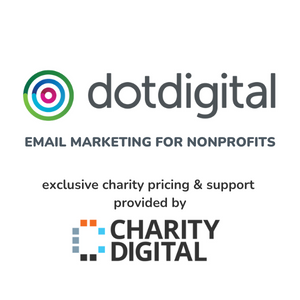Insights
INSIGHTS
All Topics
How to grow your charity
26 Jan 2024by Ioan Marc Jones
We look at how charities can grow by defining their mission, planning for success, balancing finances, optimising marketing, mastering fundraising, and working with others
There are many ways to grow a charity. Charities might consider creating an effective growth strategy, revising their mission statement, exploring donor patterns, shifting fundraising tactics, optimising marketing, working with other charities, and so on.
In fact, there are so many options, so many routes to growth, it can sometimes feel a little daunting. But charities do not need to master every channel. The best route to growth is sensible choices that take into account your capacity, your resources, and your user needs.
In short, charities need to grow in the right way. In this article, we consider some of the core routes to success, discuss why they’re important, and offer some top tips to charities.
Skip to: Fine-tune your mission
Skip to: Outline your finances
Fine-tune your mission to grow your charity
According to Statista, 170,383 charities currently operate in England and Wales as of March 2022. Charities are competing with so many other charities. One issue stopping charities from growing is a lack of definition around their core mission, or a failure to sell that mission.
Perhaps the first thing you should do in order to grow is change your mission statement. A mission statement should be one or two sentences clearly and concisely explaining what you do. Mission statements should inspire people, but should avoid sentimentality, opting instead for clarity and purpose. People reading the mission statement should clearly understand the value you bring and hope to help you succeed in bringing that value.
Remember to keep your focus narrow, not attempting to be everything to everyone, and remove any superfluous information. If you are questioning whether or not a word or short term of phrase is worth keeping, the question is your answer. Get rid of it.
And, if you are really struggling, consider hiring a copywriter to put together some options. It won’t be too pricey – it’s only a small job – but it may be worth the expense, as the mission statement essentially defines your charity’s work.
Plan for growth
Growth is not as simple as just raising funds, hiring new staff, optimising marketing, or altering the budget. It is the result and the practice of so many different variables, working together. You’ll need to plan so that growth in one area leads to changes in another, ensuring that you always practice caution, and that all growth remains sustainable.
You need to plan for growth. And the best way to plan is through the development of a strategy. An effective strategy will help you predict the trajectory of your growth, improve decision-making, ensure ownership and buy-in, and broadly improve chances of success.
Below we run through some tips to create a robust growth strategy.
Understand your starting position
The first step is to consider your current capabilities, potential resources, general mission, and any other important elements of your charity. You need to first establish a baseline. Only by understanding your current position can you hope to grow in the future.
To establish your baseline, you can take various steps. Mapping, for example, involves listing the elements of your charity that you currently use, helping you to understand each element of your charity in connection with the other elements.
You could perhaps perform various audits. A digital audit, for example, will give you an idea of your current software and hardware capabilities. A skills audit will define the skills across your organisation and a financial audit will define your current financial position.
Define user needs
Strategies let you grow in the right direction. But, first, you need to work out the right direction. That depends on defining user needs, as your users are your raison d’être. By focussing on users, you’ll notice many benefits. Among other things, centring user needs:
- Allows you to create more effective products and services
- Gives your goals, your mission, and your strategy greater direction
- Allows for more informed and more targeted decision-making
- Encourages greater empathy throughout your organisation
There are many ways to help you establish user needs. Start with quantitative research, which means utilising the information you already have– and you likely have lots. Charities can check out data from past events, membership data, sign-ups, social interactions, and so on.
Ensure you have legal consent to use the data and ensure you are always using the data ethically. Let the information tell you a story. Let successes and failures guide your strategy. If, for example, a particular service has proved very popular based on attendees, sign-ups, or feedback, you can use that information to define your direction of growth.
Use qualitative data to fill in gaps in quantitative data. Qualitative data allows you to survey your users – through email, socials, or even face-to-face – and ask them questions about your present situation, how you could improve your service, what they’d like to see change.
The responses from quantitative and qualitative research should define your growth strategy.
Establish your goals
Goals can start broad but always be mindful of the research and preparation you’ve done. Narrow down goals using goal-setting strategies. We regularly suggest using the SMART criteria, ensuring all strategy goals are Specific, Measurable, Achievable, Relevant, and Timed.
That’s a tried-and-tested goal-setting strategy, but it is not the only one. Consider, for example, FAST goals. FAST goals aim to accelerate your team’s performance by applying the following principles: Frequently discussed, Ambitious, Specific, and Transparent.
The are other alternative goal-setting strategies to SMART and FAST – such as SMARTER, CLEAR, HARD, WISE, and many other acronym-based examples.
For a more detailed analysis, check out: How to define digital strategy goals
Start writing
Once you’ve got clear goals for growth, determined current resources and user needs, then you can actually start putting together a strategy that looks professional. You can follow some simple steps, as we outline below.
It’s likely best, for consistency and ease, for one person to take responsibility for the act of writing the digital strategy. That does not mean one person has to write every word, but rather one person should take information from teams and ensure it is consistent.
Digital strategies can be long and laborious, so it’s best that the writer clearly assigns times and roles. Wherever possible, allude to the employees that vaguely hold responsibility for areas of the strategy, perhaps by simply assigning initials. Aim to have multiple members involved in each task, even if only reviewing, as increases accountability and ownership.
Prepare to revise
You are nearly finished, but not quite. An effective strategy is a moving target, always evolving, always changing. You need to move with the trends, notice patterns in data, take stock of successes and failures, and broadly change your tact based on new information.
That is particularly true when it comes to growth. You may grow slower or faster than initially expected, which means you need to go back to the strategy and revise your tactics accordingly. Sticking to the same strategy once your situation changes makes little sense.
Outline your finances to grow your charity
Your strategy should include reference to your finances. The following steps will help you outline you finances, but remember that everything should change and evolve as growth occurs. Budgeting is not a one-time thing, but a permanent feature of your charity. The following are the basics that charities should practice for a budget.
Tally income sources
You need to figure out all your various income sources. That means you should identify all your sources of known and committed income, with reference to the risk of each.
So, for example, you may have income from various types of fundraising, from grants, from sales, and other sources. You can use previous data to forecast income based on your current position. That is the baseline that you will ultimately attempt to grow.
Think about income diversity
Think about your income streams and question the risk of each. You can assess the risk using a really simple method. Write down the name of each income stream, the money taken from each stream, the costs associated, and the risk of losing that stream. That simple act will help you identify your overall risk.
If you find, for example, that one stream accounts for most of your income, but poses a significant risk, you will need to prioritise income diversity in your strategy. But if you find that you have several income streams, all of which pose little or even medium risk, income diversity may not be a priority.
Determine fixed costs
Once you’ve determined income and risks of income streams, you need to work out costs. It’s easiest to start with fixed costs, which relate to any expenses that broadly stay the same over time. Common examples of fixed costs include rent, certain utilities, domain, and salaries.
Determine variable costs
The next step is more difficult. To state the obvious, variable costs vary. These may include usage-based utilities, shipping costs, sales commissions, and so on. You’ll need to try to get a broad sense of your variable costs, so that you can factor these into your budget.
It is best to overestimate your variable costs, especially if growth is your plan. Broadly speaking, variable costs will rise as income rises, so you should plan for increases.
Determine other expenditure
Other expenditure broadly means one-time spends that you can predict. That might mean new software, perhaps an away day or training in the future. You can add these to your budget to give a more rounded view of expenditure.
It is also prudent to add a buffer for unplanned purchases and expenses, such as fixing certain hardware. The buffer can be determined based on past spend and predictive budgeting.
Consolidate in one place
You’ve gathered all of your income sources and all of your expenses. What’s next? Pulling it all together to get a comprehensive view of your financial standing for the month.
On your budget, you’ll want to tally your total income and your total expenses (i.e., adding your total fixed costs, variable expenses, and one-time spends) – then compare cash flow in (income) to cash flow out (expenses) to determine your overall profitability.
From there, you want to forecast future growth costs and expenditure. It is not always an exact science, but prudence and preparation at this stage will pay off in the long-term.
Market your mission to grow your charity
Marketing is a broad and all-encompassing term. It refers to any action an organisation takes to attract an audience to your product or services. It is the act of promotion, raising awareness, strengthening loyalty to your cause, and demonstrating the value of your services.
Marketing is something that every charity depends upon. Perhaps you post some fun and informative facts on social media. Perhaps you changed the title of your latest email header. Perhaps you’re throwing a meet and greet event. All of that is marketing.
Charities need to pick the marketing channels that work for them. Below, we offer a brief overview of how to utilise and optimise some of the most popular marketing channels.
For an informal chat on Marketing, check out our recent podcast:
Start with your website
Websites haves have become essential to charity success in the past decade and that is unlikely to change any time soon. Indeed, according to HubSpot, web traffic is one of the top forms of measurements when it comes to judging the success of marketing.
Build a website
First ensure you have a simple, well-functioning, and easy-to-navigate website. That will mean either creating a new website or starting from scratch.
If the latter, you should check out some of our favourites: Five platforms to build your first charity website.
Once your site is ready, you need to build content. Start by considering your strengths. It’s always helpful to have some written content, but you may want to play to other strengths and think of producing visual or audio content.
Consider your expertise, then consider what potential donors and service users might want to see. Marry user needs with your skills and that marriage can define your content.
Charities should publish some form of content at least once per week. People will not return to websites that always look the same, websites that seldom offer new information.
Consider developing a content calendar, so that you produce a new piece of writing at least once per week. To build the calendar, keep an eye on the developments in the sector, and look at events throughout the year.
Develop a tone of voice and house style
Charities should pick a tone of voice and apply it across all content, emails, and other forms of marketing. A strong and consistent tone of voice helps to build trust, increases return visitors to your site, demonstrates professionalism and personality, and shows expertise.
Your tone of voice can match your personality. If your mission is serious, an informal tone of voice will suit. But if you are dealing with less serious issues, there may be room for a more light-hearted tone.
Your tone of voice can be added to your style guide. A style guide needs to include all the basics, such as branding options, tone of voice, punctuation and grammar rules, formatting, and so on.
Creating a style guide can be a laborious task, so you can borrow one. There are loads of different options available online – and in bookshops – so pick whichever works for you. Check out the article from ThoughtCo that outlines some of the best free options.
Charities often spend time and effort crafting words, then pop any old image into the content. You need to develop consistent imagery, too, which you should include in your house style.
That might mean having people-focussed images, or images with no people. It might mean including words in images, or ensuring no words are ever used. You might even choose colour schemes, or icons reflecting the various themes you address.
Whatever you choose, you can find lots of options for free and paid-for imagery. The best free options include Unsplash, Pixabay, and Gratisography – though there are plenty of others. Charities can also spend a little money for paid options, such as Shutterstock, Getty, or iStock, all of which offer brilliant and high-quality images that you can access for a monthly payment.
Think about SEO
SEO is the process of improving the visibility of your website on a search engine. Search engines – mainly Google, but also Bing, Yahoo, and many others – broadly ‘crawl’ through pages looking for high-quality information that relates to the searcher’s original request.
How does the search engine determine high-quality information? It uses an algorithm that is constantly changing. But charities can apply some basic rules to perform well, such as ensuring keywords are used with a human touch, using reputable hyperlinks, writing with clear and readable language, and using media that allows for quicker load times.
SEO is a topic that requires more attention. If you want to know more, check out our in-depth guide that tell you everything you need to know: An astonishingly simple guide to SEO.
Use social media
Facebook, Twitter, Instagram, TikTok, Snapchat, LinkedIn, YouTube, and all the other social media platforms consume so much of our time and are increasingly important for fundraising. In 2019, for example, charities raised more than £1.6bn fundraising on Facebook alone.
Social media is indispensable to charities, something they can’t afford to ignore. But charities need to ensure they use social media effectively. The first mistake is trying to master every social media platform, spreading time and resources thin for each.
Charities often end up performing badly across all platforms, rather than performing well on a few. Pick the platform that best meets user needs and best extends your reach.
If, for example, you are trying to reach new demographics, TikTok, Snapchat, or Pinterest. In short, think about the platforms that will help your charity grow and dedicate time and resources to that platform.
Then work out the written and unwritten rules of that platform. Read the actual, official rules, then research online the unwritten rules and trends. You might want to establish a rough guide on the number of posts, the best times to post, the visual media involved, and so on.
Then go out and post. But learn from your mistakes. If you see success in some forms, but failure in others, note that down and use that to re-focus efforts.
If research tells you midday is a bad time to post, but your midday post has brilliant engagement, trust the audience more than the research.
What works for some people does not work for others. What works for your charity, what helps your charity grow, is all that matters.
Rely on email marketing
The benefits of strong email marketing are huge. Successful emails can translate into increased funding, greater awareness, wider reach, and ultimately growth.
To master email marketing, charities need to start by growing their email list. That means gathering data. You likely have lots of data you can already use, such as membership data, comments on articles, event sign-ups, and so on.
As long as that data is GDPR-compliant, you can use that to build your list. You can then grow your list by ensuring a sign-up form or sign-up button is available – and easily accessible – on your website. Keep the forms and buttons simple, removing all superfluous information, ensuring the entire sign-up experience is seamless.
Then you can start sending out emails. You are hoping to generate the maximum amount of engagement with the minimum amount of effort.
Below we cover some top tips to get people to click.
Use videos and images
The person who receives the email will expect some visuals. Do not lumber the reader with several block paragraphs of text, as they are unlikely to want to read. Instead, use on-brand and vibrant images, videos, GIFs, animations, and anything else you have up your sleeve.
Avoid clutter
One mistake marketers make is adding too much text to emails. It’s an overload of information for the recipient, which can be frustrating and difficult to navigate.
Do not squeeze too much information into your emails. Aim for minimalism, avoid clutter, and broadly try to make everything as clean and clear as possible. If your email seems messy, you will need to remove certain elements.
Remember skimmability
We hear a lot about the skimmability of articles, but the same is true with emails. Skimmability builds on the point made above – keep things clean. Ensure users can skim through the email, picking up key bits of texts, focussing on information that may prove appealing to them.
Do not use dense paragraphs that are difficult to sift through. Instead, focus on using two or three sentences per paragraph, with liberal use of headings and subheadings, images and anything else that broadly improves the skimmability of the articles.
Focus on subject line and header
The subject line is the first thing readers see. It’s vital, therefore, that you make the subject line attractive, concise, and engaging. As a rule, it’s best to stick to fewer than ten words and ensure that the subject line accurately conveys precisely what’s in the email.
For more information on the above, check out: The complete guide to email marketing.
Master fundraising to grow your charity
You need funds to grow. Marketing will raise awareness and funds, but that is only one part of the equation. Charities that want to grow need to master their fundraising.
Start by planning. Think about where you are now, what you do well, how much you spend, and so on, and broadly get an understanding of your current position. Set some targets and deadlines, which should marry with your growth strategy that we discussed earlier.
You will need to pick the avenues you want to explore for fundraising. But, before you start, you want to do more research. You understand your current position and you understand capacity. Now you need to understand the position of the people you want to attract: donors.
Get to know your donors
Start by getting to know your donors. That means identifying your donor base. It’s an easy task, requiring deep diving into analytics. Go through past donor data, event sign-ups, membership fees, merchandise sales, and any other relevant data to find out the following:
- What was the age, gender, profession, and other relevant information of past donors?
- What about volunteers and service users? Could they become future donors?
- Are there any networks that your charity could utilise?
That should give you a sense of the people who have donated in the past. You can use that information to fine tune your fundraising.
That might mean that you’re opting for tactics that double-down on your current donor, aiming to grow that donor base. But it could mean you want to reach new demographics that you think could provide loads of new donors.
Regardless of direction, make sure you use the data you have amassed to aid decision-making. Too many charities practice fundraising with simple assumptions. It’s better to rely on data.
Explore donor trends
You need to then explore donor patterns across the sector, finding information about the ways in which donors are giving. That means more research.
There are plenty of places to find information on donors. Check out some of the following:
- CAF publishes an annual Charity Landscape Report
- NPT publishes Giving Statistics in the UK
- The Blackbaud Institute Index shows giving trends
- The NCVO publishes a Road Ahead Report annually
Research to get an idea of the way people are giving. In 2022, for example, we saw a rise in environmental donations, while younger people and people of colour are increasingly driving change. We also know that cashless donations are rising, and fundraising is becoming more virtual.
Even a quick look at the data gives charities a sense of the landscape. You can spend a few hours digging and you may find your next great fundraising campaign revealing itself.
Look at fundraising avenues
Then you actually have to raise funds. Think about the information you have amassed about your mission, ideal donors, and donor patterns, and marry that with capacity, capabilities, and marketing potential. Then pick the fundraising avenue that best meets the above criteria.
Say, for example, your mission might appeal to young donors, but you are not currently reaching them. Research tells you that the young want to donate largely online, using more novel and innovative fundraising techniques.
Perhaps a gaming fundraiser would suit you. Or perhaps a well-placed hashtag on socials, drawing attention to a specific part of your mission that will pull your target demographic in.
Or perhaps you’re a conservation charity that depends on older donors. Perhaps you want to double-down, but with new ideas. You might consider workshops and discussions, where you can bring potential donors to you, teach them about your cause, and ask for donations.
There are millions of fundraising options, all of which may apply to your charity. Do your research, dive into the data, and pick the fundraising ideas that are most likely to succeed.
Mobilise your communities to grow your charity
Charities should mobilise communities. They should rely on networks, call on volunteers and donors in the community, and work with other charities and businesses to amplify their cause.
Here we cover three communities that can help charities grow.
Work with the local community
People want to donate to charities that they see working, charities that are literally working in their communities. Yet many larger charities – and indeed small charities – neglect the communities they are supposed to serve and fail to utilise the strength of that community.
Charities often benefit local communities, but communities also benefit charities. You’ll get regular donors, people spreading awareness, and a loyal band of volunteers if you need the support. Working with local communities is a great way to grow in the right way.
Work with the charity community
Too few charities collaborate. Charities across the UK and beyond need to get rid of the idea that they are competing and start thinking of mutually beneficial avenues of support.
Perhaps you can contact another charity and pose the question of collaboration. Consider knowledge and skill sharing, asking if the charity has any elements of operations that you can help with. Think what you can offer them, how you can help, and reciprocation will come.
Charities can also amplify each other’s causes. Two (or more) charities could agree to promote each other in their comms, perhaps with an email or a social post highlighting a charity’s missions. Subscribers and followers may be interested in donating to another cause.
Work with the business community
Find organisations that compliment your charity to partner up with. Having a great partner to work with makes a real difference. For charities, corporate social responsibility (CSR) means building a relationship with the right business partner increases fundraising potential.
CSR brings many benefits to charities, many of which will help them grow. CSR gives charities an increasing pool of volunteers – and potential donors – and a loyal partner that will help promote your charity through marketing and comms. It’s a mutually beneficial agreement.
For more, check out: How to fundraise through corporate social responsibility.
Ioan Marc Jones
More on this topic
Recommended Products
10 Jan 2025by Ioan Marc Jones
How charities stopped centring service users
09 Jan 2025by Charity Digital
AI adoption: Lessons from Salesforce's Trailblazer community
Our Events
Charity Digital Academy
Our courses aim, in just three hours, to enhance soft skills and hard skills, boost your knowledge of finance and artificial intelligence, and supercharge your digital capabilities. Check out some of the incredible options by clicking here.























